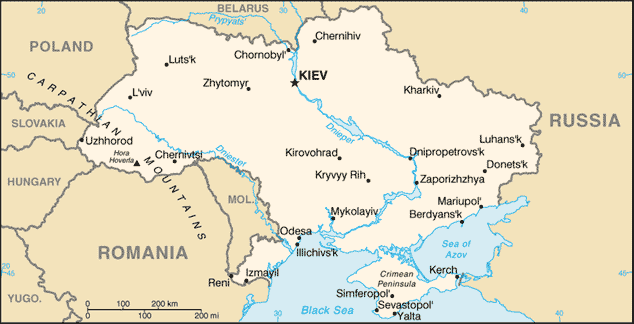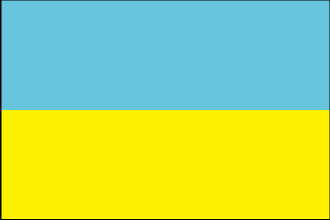
|
Ukraine
Background:
Richly endowed in natural resources, Ukraine has been fought over and
subjugated for centuries; its 20th-century struggle for liberty is not yet
complete. A short-lived independence from Russia (1917-1920) was followed by
brutal Soviet rule that engineered two artificial famines (1921-22 and 1932-33)
in which over 8 million died, and World War II, in which German and Soviet
armies were responsible for some 7 million more deaths. Independence
was attained in 1991.
|

Climate and Terrain:
Climate: Temperate continental; Mediterranean only on the southern Crimean
coast; precipitation disproportionately distributed, highest in west and north,
lesser in east and southeast; winters vary from cool along the Black Sea to
cold farther inland; summers are warm across the greater part of the country,
hot in the south.
Terrain: Most of Ukraine consists of fertile plains (steppes) and plateaus,
mountains being found only in the west, and in the Crimean Peninsula in the
extreme south.
|
|
|
Economy overview:
After Russia, the Ukrainian republic was far and away the most important
economic component of the former Soviet Union, producing about four times the
output of the next-ranking republic. Its fertile black soil generated more than
one-fourth of Soviet agricultural output, and its farms provided substantial
quantities of meat, milk, grain, and vegetables to other republics.
|
|